
In the previous article, I introduced Japanese sweets in the spring season.
●A List of Japanese Sweets ! Spring edition.
There were many Japanese sweets that looked very delicious.
There are many Japanese sweets that are plant-conscious in the spring season, but what kind of sweets do you have in the summer?
In this article, I would like to introduce summer japanese sweets popular in Japan.
There are many beautiful Japanese sweets.
Japanese sweets summer season list
There are many beautiful Japanese sweets.
There are many refreshing and cold Japanese sweets because they are summer sweets. At the end, we also introduce some very beautiful sweets, so don't miss it!
Kuzu-Mochi
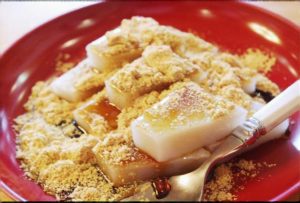
Kuzu-Mochi is a starch that is refined from wheat flour and fermented with lactic acid bacteria, and has a unique flavor. Eat black syrup and Kinako on Kuzu-mochi. It gets hard when cold, so it is recommended to buy at room temperature and eat immediately.
It has a smooth texture. Kanto-style kuzumochi is said to be the only fermented food in Japanese sweets.
Yokan with bamboo

"Yokan with bamboo" has an exquisite flavor of bean paste with a refreshing scent of bamboo. The water yokan in the bamboo tube has a refreshing "bamboo scent" and the fresh green bamboo shades are also cool!
Bamboo-filled yokan has a smooth, smooth throat and a refreshing sweetness! It is also a Japanese summer tradition in which the red bean flavor combines the refreshing scent of green bamboo with the strongest tag. Delicious Mizuyokan made from real green bamboo is a Japanese sweet that is perfect for the hot season and has a very nice atmosphere.
Warabi-Mochi

Warabi-mochi is a Japanese sweet that is made from warabi powder and has a soft taste. It is common to eat it with kinako, matcha powder, or black syrup.
Warabi-mochi is a Japanese sweet with a history that is said to have been favored by Emperor Daigo in the Heian period. The starch used in the warabi-mochi was "honwarabi powder", which was collected from the roots of the warabi of the plant.
However, as with Hon-Kuzu flour, it takes a lot of time and effort to purify Hon-warabi powder, and the amount of starch (Hon-warabi flour) that can be purified from one warabi is about 5%. Warabi-mochi, which uses potato and lotus root starch, is now popular because it is a rarer and more expensive ingredient.
Mizuyokan

Mizuyokan is a watery summer yokan made by boiling and melting agar, adding azuki bean paste and sugar, mixing and pouring it into a container to cool. Unlike ordinary yokan, it has a smooth and silky texture, so water yokan that is chilled during the hot summer months is very delicious.
In summer, various yogurt makers sell water yokan on the food floor of department stores. They also sell Mizuyokan, which has a long shelf life, making it a perfect souvenir for summer in Japan.
Anmitu(Mitumame)

It is said that Mitumame was born in the late Edo period.
At that time, it was a common sweet that was made from rice flour, called new flour work that used to model animals and dolls, and red peas, which were put on a bowl together with honey and eaten.
It wasn't until the Meiji era that agar, fruits, Gyuhi, Shiratama-Dango, etc. came to be served as it is now.
And Anmitu refers to the one in which the red bean paste is placed. In other words, it is one of the Mitumame types.
The difference from Mitumame is "whether you have Anko!" There are menus such as "Shiratama-Dango Anmitsu" with Shiratama-Dango in Anmitu and "Kuri Anmitsu" with chestnuts, so the number is surprisingly large.
Kuzumanjyu

Kuzumanju is a Japanese sweets that represents summer, when the bean paste looks like the transparency of the kuzu and the fluffy texture that is different from either Mizuyokan or jelly is a habit.
Actually, there is a secret in the nature of kuzu, the raw material. Kuzu, which is used for kuzu steamed buns, has the property of strengthening the body and cooling the body a little.
Its main effect is antipyretic action, and it is a gastrointestinal-friendly food that is used as a herbal medicine that works on the gastrointestinal tract. It also has the effects of healing thirst and pain in the mouth and thirst, and replenishing water in the body.
In an era when there was no air conditioner, to survive the hot summer, the effect of cooling visually from the inside of the body due to the nature of the ingredients while enjoying the coolness visually. If you chill it too much, it will turn white, so eat at room temperature as soon as possible.
Tokoroten

When the liquid of the seaweed called Tengusa is cooled, it solidifies to form Kanten.
Although it has almost no nutritional value, it is a diet-friendly food due to its abundant dietary fiber and intestinal effect.
In eastern Japan, it is common to eat with three cups of vinegar, but in western Japan it is sometimes eaten as sweets with black syrup.
Made in Tengusa, it's very healthy. I eat it cold, but I recommend eating it when you are hungry because it has no calories.
Mizumanjyu

A summer sweets made of Kuzu-powder, which is a semi-transparent cloth wrapped in bean paste.
Ogaki City, Gifu Prefecture, is a specialty of Gifu Prefecture because it is a summer tradition from the Meiji era.
The name "Kuzumanju" is more commonly used nationwide, but other names are also called "narcissus manju."
It is good to eat it in a bowl as it is, but sometimes it is soaked in cold water and eaten. There is also Mizumanjyu floating in sugar water, and since it is cool and I will eat it in no time, I recommend buying 2 to 3 pieces‼
Kuzukiri

It looks similar to Tokoroten, but the ingredients used are different from Tokoroten. Tokoroten uses the seaweed Tengusa, while Kuzukiri is made from Kuzu powder.
The smooth texture and elegant sweetness have become popular, and the deliciousness has been loved by men and women of all ages. In particular, Kuzukiri can be eaten in most places of sweet shops in Kyoto, and it has become a feature to feel the coolness of summer. It is also very popular as a souvenir.
Shaved ice matcha

There are many countries other than Japan that eat shaved ice.
Although there are syrup flavors such as strawberries, melons, and lemons, there is Matcha flavor shaved ice in Japan. "Uji-Matcha Shaved ice", which is eaten with red beans over sprinkled with matcha syrup, is a Japanese traditional sweet. There is also shaved ice on which Shiratama-Dango is on ice.
The aroma and bitterness unique to matcha attracts many people. You can enjoy it as it is, combine it with azuki beans paste or shiratama-Dango, sprinkle condensed milk, and so on. Matcha and vanilla ice cream, matcha sorbet and plenty of azuki bean paste. With the addition of two colors of shiratama-dango and matcha jelly, it is a delicious taste for matcha lovers.
Kohaku suger

Kohaku-Suger is Kanten boiled and melted with sugar and food red.
It has become a very popular confectionery called "eating gem" on SNS.
The texture is like Kanten jelly with a crispy outside and a plump inside. Kohaku-Suger is a sweet that you can enjoy the taste of sugar because it is made from simple ingredients. You can store it at room temperature, just as you can store it at room temperature. They are also sold at department stores, so when you visit Japan, look into the shops and look for them.
Japanese summer sweets feel water and coolness
Japanese summer sweets are cool to look at and make you feel good.
I found that it was made with water and coolness in mind. I think Japanese sweets are easy and quick to feel and happy.
You can refresh and relax by eating Japanese sweets. and you can feel happy with a little sweetness.
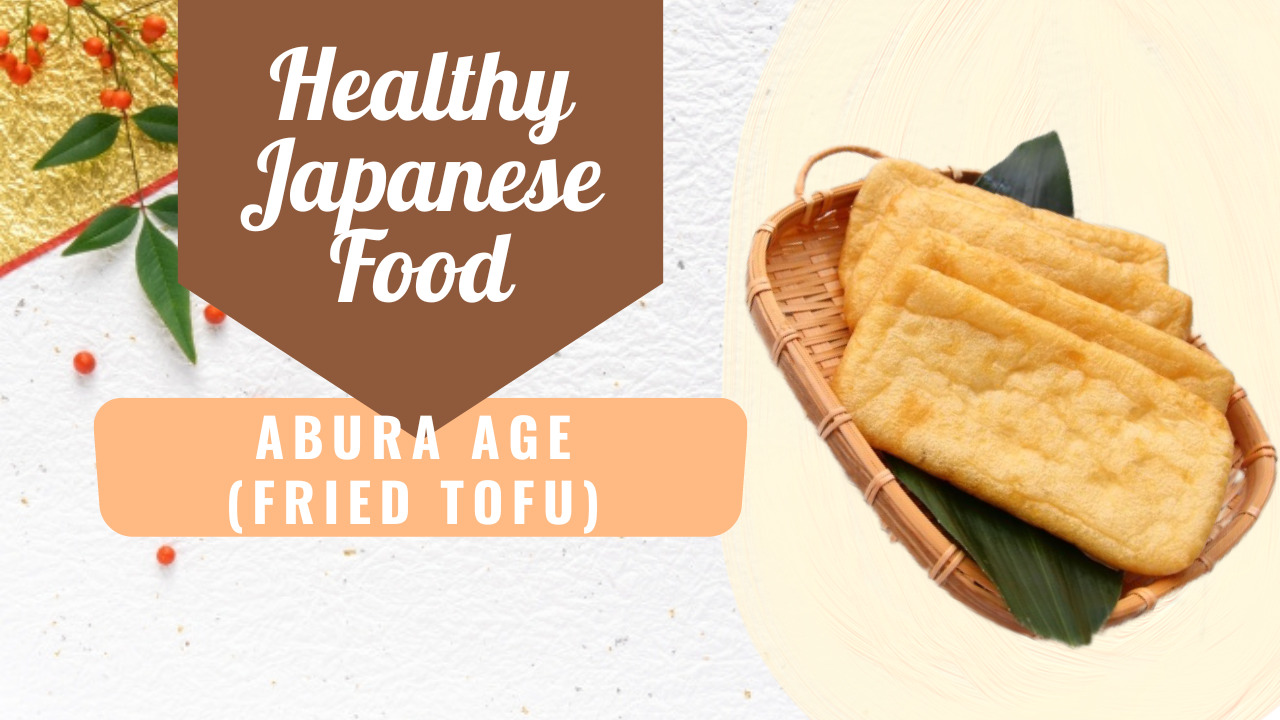
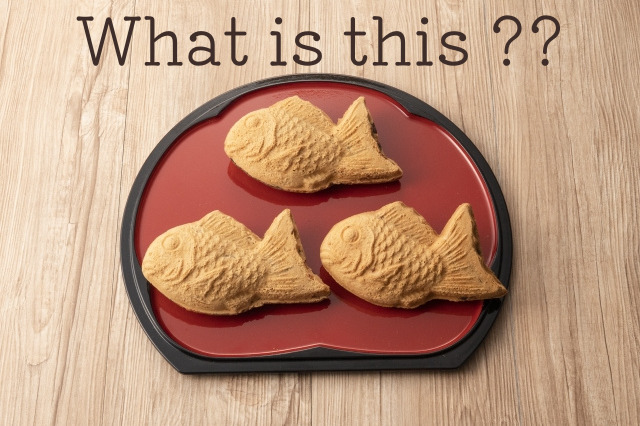
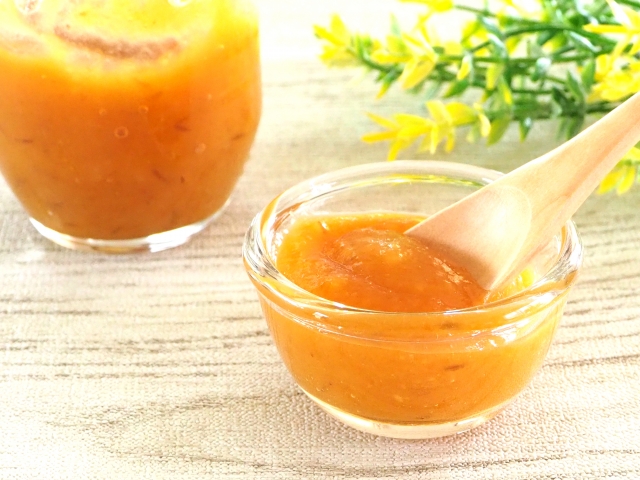




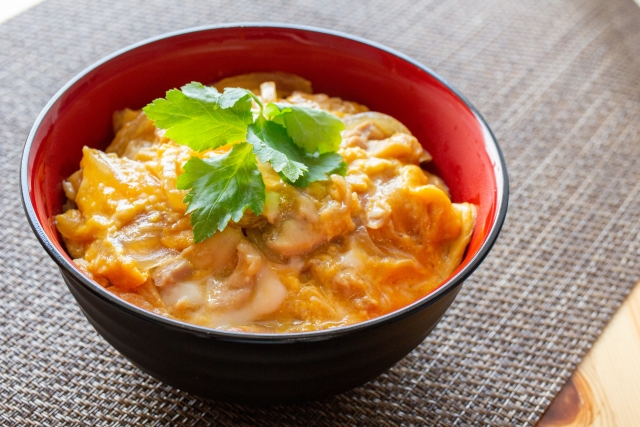





![●Japanese sweets as a souvenir at a funeral [shinobu Manjyu]](https://healthyjapanesefoods.com/wp-content/uploads/2020/06/img_5471-150x150.jpg)





